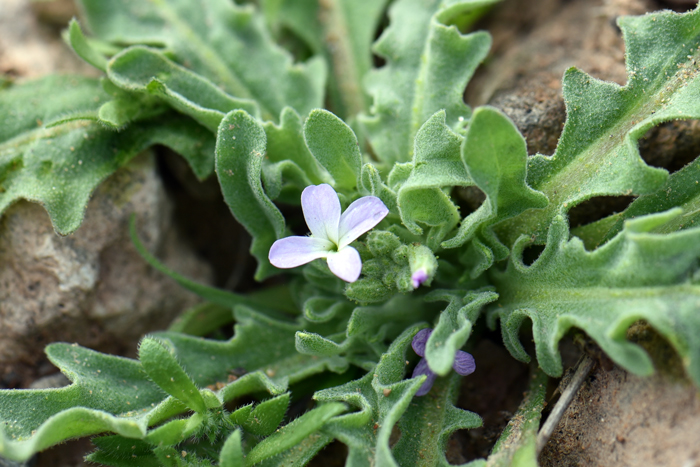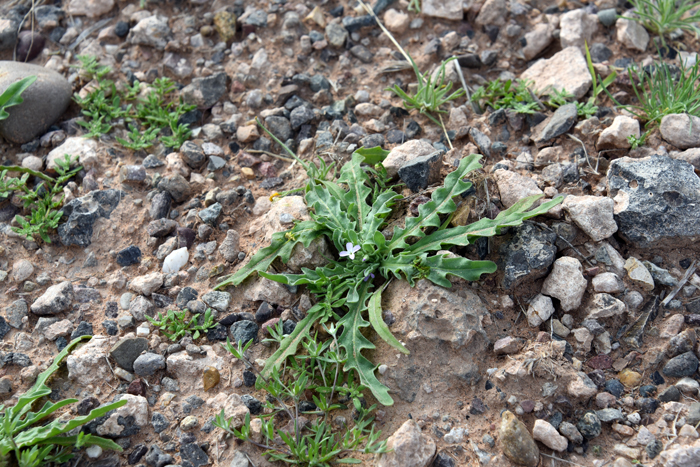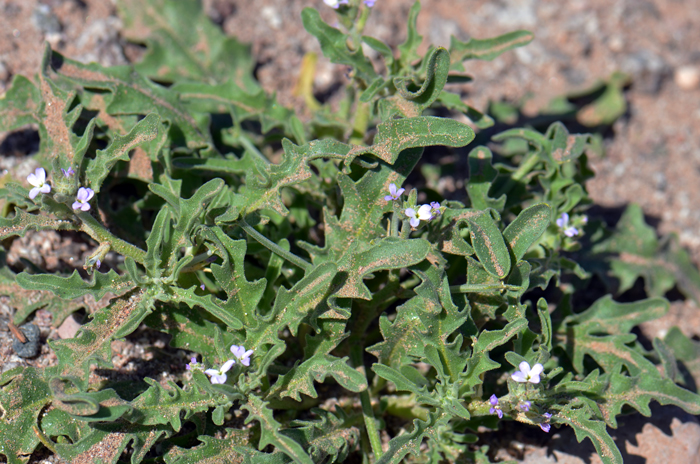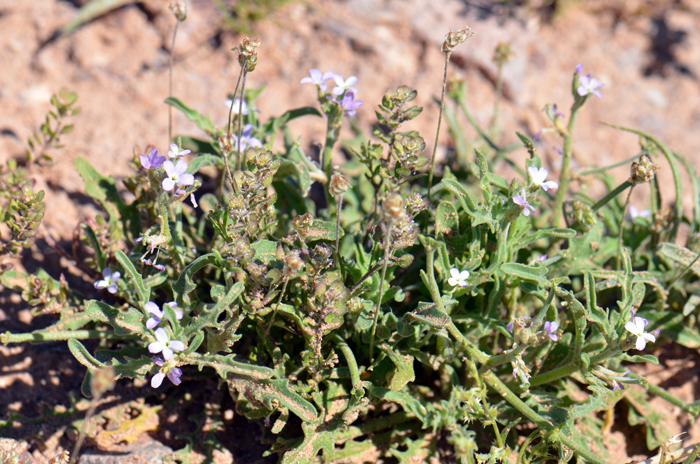Matthiola parviflora, Stock




Scientific Name: Matthiola parviflora
Common Name: Stock
Also Called: Small Flower Stock, Three-horned Stock
Family: Brassicaceae, Mustard Family
Synonyms: (Cheiranthus parviflorus, Hesperis micrantha)
Status: Introduced from the Mediterranean region (France, Portugal, Italy, Spain)
Duration: Annual
Size: About 1 foot (30 cm) tall, more or less.
Growth Form: Forb/herb; plants low growing, plants with dense, soft hairs (tomentose); stems almost erect, diffusely branched at base.
Leaves: Green; basal leaves with long stalks (petioles), leaves crowded at base and along stem, dissected toothed and/or pinnately lobed; upper stem leaves (cauline) elliptical.
Flower Color: Pink, purple, lavender, blue or white; inflorescence a short raceme, flower with short stalks (pedicel) or without stalk (sessile), often with leaves on top; flowers small, rounded or oval, about ½ inch (13 mm); there are 4 sepals and 4 petals (5 to 6 mm) in "crucifixion" or cross formation; note in the photographs above the flowers are often lower than the leaves; fruit a silique.
Flowering Season: February, March and April; January to May in Spain.
Elevation: 700 feet to ? (200 m); Painted Rock Reservoir area, Arizona
Habitat Preferences: Dry sandy areas.
Recorded Range: At the time of the writing Matthiola parviflora is found as an exotic species in central and southern Arizona around Phoenix and Tucson.
North America & US County Distribution Map for Matthiola (USDA Plants Database has no, US/regional, distribution map).
U.S. Weed Information: In North America Matthiola parviflora is listed as an Invasive Plant of Saguaro National Park - 02/21/2017) (Present and Eradicated). Plants included here may become weedy or invasive.
Invasive/Noxious Weed Information: No information available.
Wetland Indicator: No information available.
Threatened/Endangered Information: No information available.
Matthiola is a genus of flowering plants in the mustard family named after Pietro Andrea Mattioli.
The genus Matthiola was published by William Townsend Aiton in 1812.
The genus has about 50 species of annual or biennial and even perennial herbaceous plants and subshrubs. Matthiola species are often cultivated for the heavily scented and colorful flowers.
In the Southwestern United States: Arizona, California and, Texas each have 2 species of Matthiola, Nevada and Utah each have 0 species and New Mexico has 1 species. All data approximate and subject to revision. Arizona is the only know state with Matthiola parviflora.
Comments: Stock, Small Flower Stock or Three-horned Stock is an exotic invasive in the Sonoran desert. Although this species is listed as an "invasive" there is little evidence of the nature and extent of the plants potential to cause environmental harm. Plants above were photographed 3/12/2013 in the Painted Rock reservoir area, Maricopa County, Arizona.In the Mediterranean region, many species in the genus Matthiola are cultivated for their heavily scented and colorful flowers.
The genus Matthiola was published by William Townsend Aiton in 1812.
The species epithet "parviflora" (parviflor'a/parviflor'um/parviflor'us:) is from the Greek word parvus meaning "small" and flora, meaning "flower" and thus "small-flowered".

